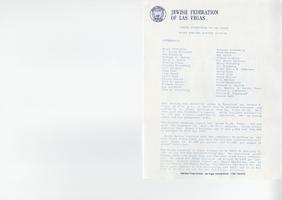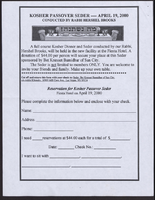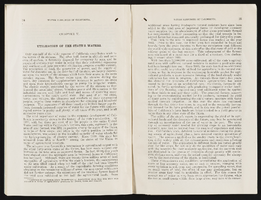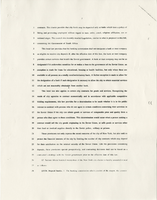Search the Special Collections and Archives Portal
Search Results

Jewish Federation correspondence, meeting minutes, and other records, item 35
Description
Jewish Federation of Las Vegas Board meeting minutes, December 5, 1990.
Humanist Association of Las Vegas and Southern Nevada (HALVASON) Newsletters
Identifier
Abstract
The Humanist Organization of Las Vegas and Southern Nevada (HALVASON) collection contains newsletters from February 1998 to September 2008. Some years are missing issues. There is one folder of related newsletters.
Archival Collection
Hicks, Dee, 1946-
Dee Hicks was born in Damascus, Arkansas in 1946. She was the tenth of 13 children born to Guy and Augusta Goff. Her father was a Baptist preacher and carpenter by trade, and her mother was a housewife. Hick’s decision to become a nurse became a focal point in her life in the tenth grade. She joined the Future Nurses’ Club and geared her high school classes toward nursing. Later, Hicks went to Oklahoma Baptist University and graduated with a bachelor of science in nursing.
Person

Meeting minutes for Consolidated Student Senate University of Nevada, Las Vegas, March 4, 1996
Date
Archival Collection
Description
Text

Minutes from Temple Beth Sholom Board of Directors meetings, June 1987 - May 1988 (2 of 2)
Date
Archival Collection
Description
Meeting minutes include reports from committees of the board, correspondence, and balance sheets.
Text




